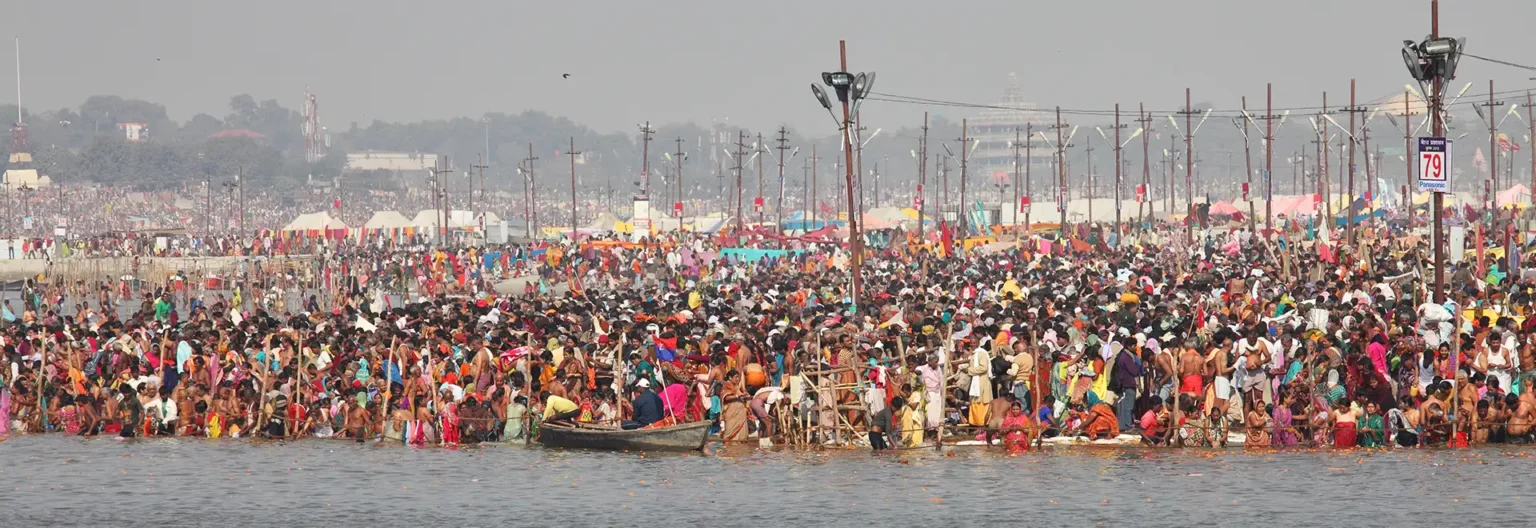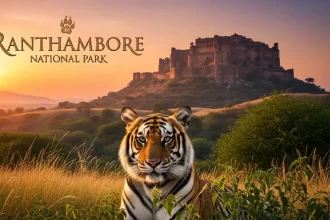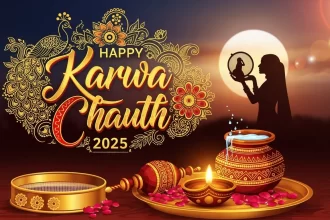The Maha Kumbh Mela, a spiritual and cultural phenomenon, is set to take place in Prayagraj from January 13 to February 26, 2025. Recognized as the world’s largest human gathering, this sacred event holds profound significance in Hinduism, bringing together millions of devotees, ascetics, and tourists from around the globe.
The Legend of Kumbh Mela
The origin of the Kumbh Mela is rooted in the mythological tale of the Samudra Manthan (churning of the ocean) described in Hindu scriptures. During the churning, a pot of amrita (nectar of immortality) emerged, leading to a cosmic battle between the Devas and Asuras. In the ensuing conflict, drops of nectar fell at four locations: Haridwar, Prayagraj, Nashik, and Ujjain, which are now the venues for the Kumbh Mela.
The celestial timing of the Kumbh Mela is determined by specific planetary alignments, particularly when Jupiter enters Aquarius (Kumbh Rashi) and the Sun transitions to Aries.
A Global Pilgrimage of Faith
The Maha Kumbh Mela, often referred to as the festival of the sacred pitcher, has deep roots in Hindu mythology. Recognized as the world’s largest public gathering and collective act of faith, the Mela attracts ascetics, saints, sadhus, sadhvis, kalpvasis, and pilgrims from diverse walks of life.
Celebrated four times over a span of 12 years, the Kumbh Mela rotates among four sacred sites in India:
●Haridwar, Uttarakhand: On the banks of the Ganges.
●Ujjain, Madhya Pradesh: Alongside the Shipra River.
●Nashik, Maharashtra: On the banks of the Godavari River.
●Prayagraj, Uttar Pradesh: At the confluence of the Ganga, Yamuna, and the Sarasvati Rivers.
Each location’s festival is determined by unique astrological alignments of the Sun, Moon, and Jupiter. These celestial events mark the most auspicious time in Hinduism, blending astronomy, astrology, spirituality, and ritualistic traditions.
Sacred Rituals and Ceremonies
The Kumbh Mela is a vibrant confluence of religious and cultural activities. Pilgrims range from common worshippers to hermits emerging from their seclusion for this sacred occasion. Highlights include:
Kalpavas: A month-long spiritual retreat where devotees renounce material comforts and engage in meditation, fasting, and prayers near the rivers.
Shahi Snan (Royal Bath): Led by Akharas (Hindu monastic orders), this grand procession includes ascetics, saints, and Nagas (naked ascetics) performing elaborate rituals.
Peshwai Procession: A vibrant display of cultural and religious pride as Akharas enter the Mela grounds on elephants, horses, and chariots.
Cultural Events: Musical performances, spiritual discourses, and art exhibitions enrich the experience.
Kalpavas
Kalpavas is a unique and deeply spiritual tradition observed during the Kumbh Mela, where devotees dedicate an entire month to renunciation, meditation, and spiritual practices. The word “Kalpavasi” comes from ancient scriptures, referring to those who leave behind their worldly lives to focus solely on spiritual purification and penance during the auspicious period of the Mela.
Lifestyle During Kalpavas:
- Kalpavasis live in simple tents or huts near the riverbanks.
- They follow a strict routine of daily baths in the sacred rivers, fasting, and offering prayers.
- Charity, silence, and detachment from material possessions are key aspects.
Spiritual Goals:
- To purify the soul and body by observing disciplined spiritual practices.
- To gain blessings, wisdom, and moksha (liberation) through the guidance of saints and ascetics.
Modern Relevance:
Despite the age-old traditions, Kalpavas continues to attract people, including urban devotees seeking spiritual solace and a break from their fast-paced lives.
Shahi Snan (Royal Bath)
The Shahi Snan or Royal Bath is the most iconic and awaited ritual of the Kumbh Mela. It symbolizes the spiritual cleansing and renewal of the soul.
Akharas Lead the Ritual:
- Akharas are traditional Hindu monastic orders representing different sects of ascetics, saints, and warriors.
- The leaders of the Akharas—Nag Sadhus, Mahamandaleshwars, and Acharyas—take the first ceremonial dip, setting the example for millions of pilgrims.
Grand Processions:
- The saints arrive at the bathing ghats in elaborate processions.
- They ride on elephants, horses, or ornate chariots, carrying flags, swords, and other symbolic items.
- Drums, conch shells, and chants fill the air, creating an electrifying spiritual atmosphere.
Naga Sadhus:
- Famous for their minimal attire and ash-covered bodies, the Nagas embody renunciation and detachment.
- Their participation adds mystique to the ritual.
Significance:
The holy dip during the Shahi Snan is believed to cleanse all sins and bestow blessings for spiritual liberation.
Peshwai Procession
The Peshwai Procession marks the grand entry of Akharas into the Mela grounds, serving as a cultural spectacle that signifies the official commencement of the Kumbh Mela.
Visual Grandeur:
- Saints and sadhus, adorned in vibrant robes and jewels, travel in decorative chariots or on horseback.
- Elephants painted with traditional motifs, processional bands, and ceremonial weaponry add to the grandeur.
Cultural Heritage:
- The Peshwai reflects the rich traditions of Hinduism, with each Akhara showcasing its distinct identity and legacy.
- It’s a unifying event that draws people from all walks of life.
Symbolism:
The procession symbolizes the unity of faith and the supremacy of spiritual leaders in guiding devotees toward enlightenment.
Cultural Events
The Kumbh Mela isn’t just about rituals; it’s a celebration of Indian culture, spirituality, and art, offering pilgrims and visitors a holistic experience.
Musical Performances:
- Devotional songs (bhajans) and classical music concerts by renowned artists create an uplifting ambiance.
- Performances of traditional folk music and dance from various Indian regions showcase the diversity of India.
Spiritual Discourses:
- Prominent saints and scholars deliver sermons on philosophy, religion, and moral values.
- These sessions provide spiritual insights and guidance to devotees.
Art and Exhibitions:
Various exhibitions depict Hindu mythology, the history of Kumbh Mela, and its significance.
Local artisans display handicrafts, sculptures, and religious artifacts, enriching the cultural experience.
Community Activities:
Free kitchens (langars) serve food to millions of attendees.
Workshops on yoga, meditation, and holistic living attract modern seekers.
Impact of These Traditions
●These traditions and events together make the Kumbh Mela a transformative experience, blending spirituality with cultural heritage.
●The grandeur of the Shahi Snan and Peshwai Processions, combined with the introspective essence of Kalpavas and enriching cultural events, ensures that the Kumbh remains a beacon of faith, unity, and cultural pride.
Significance of Prayagraj
Prayagraj, historically known as Allahabad, is considered the holiest of the four Kumbh Mela locations. The confluence of three sacred rivers—the Ganga, Yamuna, and the mythical Saraswati—at the Triveni Sangam makes this city a spiritual epicenter.
Bathing Rituals and Key Dates
| Date | Day | Event | Significance |
| January 14, 2025 | Tuesday | Makar Sankranti Snan | Marks the Sun’s transition into Capricorn. |
| January 17, 2025 | Friday | Paush Purnima Snan | Begins the Kalpavas for devotees. |
| January 27, 2025 | Monday | Mauni Amavasya Snan | Silent new moon, the most significant bathing day. |
| February 8, 2025 | Saturday | Basant Panchami Snan | Celebrates the arrival of spring. |
| February 17, 2025 | Monday | Maghi Purnima Snan | Sacred full moon bathing day. |
| February 26, 2025 | Wednesday | Maha Shivratri Snan | Concluding day dedicated to Lord Shiva. |
Central to the Maha Kumbh Mela is the ritual of bathing in the holy waters, believed to cleanse sins, liberate ancestors, and lead the soul toward Moksha (spiritual liberation). While bathing is considered sacred throughout the festival, the following dates are particularly significant:
●Paush Purnima (January 13, 2025): Marks the unofficial start of the Kumbh Mela and the beginning of Kalpvasa, a period of spiritual discipline.
●Makar Sankranti (January 14, 2025): A day signifying the transition of the Sun into Capricorn, it is one of the most auspicious times for a holy dip.
●Mauni Amavasya (January 29, 2025): Known as the “silent new moon,” this is the most important day for bathing, drawing massive crowds.
●Basant Panchami (February 3, 2025): Celebrates the arrival of spring and is a favored day for bathing and worship.
●Maghi Purnima (February 12, 2025): The full moon day of Magha, ideal for rituals and prayers.
●Maha Shivaratri (February 26, 2025): The concluding day of the Maha Kumbh Mela, dedicated to Lord Shiva.
Kalpavas: A Life of Simplicity and Devotion
Kalpavas refers to a month-long period of spiritual retreat during the Kumbh Mela. Devotees, known as Kalpvasis, dedicate themselves to strict penance, detachment, and devotion. Living in temporary camps near the riverbanks, they adhere to a disciplined routine of:
●Bathing in the holy river thrice a day.
●Abstaining from worldly comforts and desires.
●Engaging in meditation, prayers, and spiritual discussions.
●Following a simple, sattvic (pure) diet.
This lifestyle symbolizes surrender to divine will, purification of the soul, and the ultimate quest for liberation (moksha).
General Public Bathing: Purification of Body and Soul
The act of bathing during the Maha Kumbh is open to everyone, offering spiritual benefits regardless of one’s social or religious standing. Millions gather to immerse themselves in the holy rivers during auspicious moments, believing it washes away sins and paves the way for a more virtuous life.
The mass bathing is a powerful expression of faith, unity, and humanity’s collective quest for redemption.
Spiritual Benefits and Significance
1.For Kalpvasis:
- Attaining mental clarity and spiritual elevation.
- Experiencing a sense of detachment from materialism.
- Gaining the spiritual merit of a lifetime through disciplined living.
2.For General Pilgrims:
- Cleansing of past sins and renewal of spiritual energy.
- Enhanced faith through participation in sacred rituals.
- A sense of unity amidst a collective journey toward salvation.
The Grand Processions and Shahi Snan
The Shahi Snan (royal bath) is the most celebrated aspect of the Kumbh Mela. It involves grand processions led by Akharas (monastic orders) featuring saints, sages, and Naga sadhus in all their glory. These processions are marked by chants, music, and displays of spiritual fervor. The Shahi Snan represents the zenith of the festival, symbolizing blessings from the divine and spiritual enlightenment.
Akharas: The Guardians of Faith
Akharas are central to the Kumbh Mela, representing various sects of ascetics who uphold the spiritual and cultural traditions of Hinduism. The Akharas are at the heart of the Kumbh Mela, representing unity and spirituality. With their origins linked to Adi Guru Shankaracharya, Akharas were initially established to protect the “Sanatan Dharma” and foster spiritual values,These orders are divided into three main categories based on their deity of worship:
1.Shaiva Akharas: Dedicated to Lord Shiva.
2.Vaishnava Akharas: Worshippers of Lord Vishnu.
3.Udaseen Akharas: Followers of Chandra Dev, associated with Sikh traditions.
Each Akhara organizes camps and participates in the grand processions, led by their leaders, known as Mahamandaleshwaras, who ride ornate chariots flanked by their disciples.
Cultural and Spiritual Highlights
Beyond the bathing rituals, the Maha Kumbh Mela offers a vibrant tapestry of spiritual and cultural experiences:
●Spiritual Discourses: Renowned saints and spiritual leaders deliver enlightening talks.
●Cultural Programs: Folk performances, devotional music, and art displays enrich the atmosphere.
●Langar (Community Kitchens):Free meals offered to pilgrims and visitors, showcasing the spirit of seva (service).
Naga Sadhus and Akhara Hierarchy
The Naga Sadhus, an integral part of the Kumbh Mela, are associated with Akharas and known for their ascetic lifestyle. The Akharas, led by Mahamandaleshwaras, organize spectacular processions during the Shahi Snan, showcasing traditional weaponry and rituals.
Cultural Highlights at Maha Kumbh
Khak Chowk
An age-old tradition, Khak Chowk is a hub for over a hundred saints and spiritual leaders affiliated with Vaishnav Akharas. Managed by a dedicated committee, it provides spiritual guidance and accommodations to visiting pilgrims and saints.
Dandiwada
Dandiwada refers to the ascetics who carry a wooden staff known as “Brahma Danda.” This ancient tradition, rooted in the teachings of Adi Shankaracharya, represents discipline and spiritual authority. Dandiwada symbolizes the continuity of dharmic principles.
Acharya Bada
The Acharya Bada sect, also known as the Ramanuj Sect, emphasizes dualism and devotion. Followers undergo rigorous training in Vedic knowledge and spiritual practices. Their rituals, which include Panch Sanskar and Yajna Sanskar, highlight a commitment to self-purification and divine worship.
Role of Prayagwals
The Prayagwals, the original custodians of Prayagraj, are integral to the Kumbh Mela’s rituals. Acting as guides and priests, they maintain genealogical records and ensure pilgrims perform traditional practices like Sankalp, Pind Daan, and Shaiyya Daan. The Prayagwals’ close association with pilgrims fosters a deep spiritual connection and adds authenticity to the Kumbh experience.
Sustainability Initiatives: A Plastic-Free Maha Kumbh
The Maha Kumbh Mela 2025 is committed to eco-friendly practices. Key initiatives include:
●Plastic Ban: Prohibition of single-use plastics.
●Waste Management: Implementation of waste segregation and recycling systems.
●Sustainable Infrastructure: Use of biodegradable materials for tents and temporary facilities.
●Public Awareness Campaigns: Encouraging attendees to adopt sustainable practices.
Key Tips for Pilgrims
●Plan Ahead: Make travel arrangements early, considering the vast number of attendees.
●Stay Informed: Familiarize yourself with the Shahi Snan dates and Akhara processions to avoid overcrowded areas.
●Eco-Friendly Practices: Carry reusable water bottles and avoid littering.
Why the Kumbh Matters to Academia
For global scholars, the Kumbh Mela exemplifies a confluence of ancient wisdom and modern management practices. Its success lies in uniting spiritual purpose with practical execution, making it a beacon of inspiration for event organizers, city planners, and crisis managers worldwide.
By studying the Kumbh, institutions gain insights into multi-dimensional coordination, fostering a new generation of leaders who can tackle challenges with precision, innovation, and empathy
Conclusion
The Maha Kumbh Mela 2025 in Prayagraj is more than a spiritual gathering; it is a confluence of faith, culture, and history. From the sacred bathing rituals and Akhara processions to the sustainable initiatives and cultural heritage, this event promises a transformative experience for devotees and visitors alike. Ensure you immerse yourself in its grandeur while respecting its spiritual and ecological essence.







